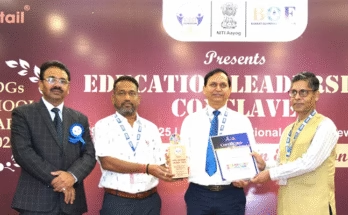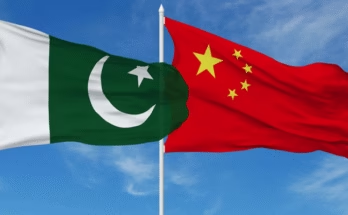 by M C Behera
by M C Behera
(Professor of Tribal Studies, Formerly Dean, School of Cultural Studies; Former Director Arunachal Institute of Tribal studies; Former Director, Center for Distance Education)
Janta Curfew is a multi-prong approach to fight against the pandemic caused by Coronavirus (COVI). It is simple, but based on a firm philosophy covering various aspects of life. Cleanliness, isolation, appreciation through clapping, special focus on people above age 60 and appeal to pay salary to domestic help place it on a high order humanitarian consideration.
Prime Minister Narendra Modi’s call for Janta Curfew is a well thought out strategy towards mass isolation, segregation and to maintain distance from affected persons. The main purpose is to control the spread of the disease and to help curing the disease through isolation. This call is in the line of global trend as the disease is global, a pandemic. But in Modi’s call, the spirit invokes to tradition which many communities still celebrate. As has been said, the approach is comprehensive and has humanitarian touch. Obviously, a reference to non-literate societies is due to understand its root in tradition.
By discussing about COVID-19, its symptoms, and curative steps; my intention is not to create or reiterate an awareness per se in the line of various agencies. The governments, media, NGOs, institutions and companies, celebrities are already into the job and doing yeoman service. I have taken this ‘awareness campaign’ as the base to create awareness in the field of academics in order to understand human civilisation as a continuity and holistically.
From above discussions two crucial points emerge-first isolation and second as a corollary, working at home.
Janta Curfew is essentially a mode of popularising isolation. Three questions arise. Did isolation strategy appear first time in medical history? Second, is it an innovation of modern scientific thought? Third, is the practice of ‘work at home’ new in livelihood pursuits? Let us try to understand with reference to Jana who are, as it is believed, on the other side of western sense of modernity.
Jana, who are now known as tribes in academic parlance and Scheduled Tribes in Constitution of India constitute an inalienable part of India’s social structure; other component in binary opposite being Jati. But both complement each other to comprehended India’s social structure as a unity. Whether Jati evolved from Jana or not is not the point of debate. What is important is that the practices which exist in non-literate communities also exist in literate scientific traditions and even in modern medical practices. The reference is to isolation as a remedial measure among the Jana/tribes; Jatis, particularly among rural folks and in modern medical system. Quarantine ward in hospitals is a better example.
The practice that exists both in modern and traditional societies of distant past cannot be something top down transmission. It claims further insight into the proposition and investigation. However, any person interested in tribal studies knows various taboos observed among the tribes. When epidemic breaks out in a village, then the villagers do not move out of their house/village boundary. Entry of members of other villages is strictly prohibited. Evidently, any member of an epidemic affected village is not allowed to enter in other villages as it is believed that he/she will cause the disease in unaffected villages. So is the case, when a family observes taboos relating to curative ritual. In the Northeast, the term ‘genha’ is popular across the tribes, though each tribe has its own term for such prohibitions or taboos having the essence of isolation at the core. Practice of isolation restricts movement and thus contact between affected and non-affected persons. Besides, physical restriction, tribal sense of isolation also has restrictions on food, works, etc. It also connotes to purity and pollution notion. Understandably, the notion of isolation among the Jana/tribes is comprehensive and inclusive in cultural perspective than the notion of in medical practices.
Needless to say, isolation as heal care practice has its root in tribal mode of thought. Isolation concerning COVID-19 has an element of sanitisation. Buses, offices, etc. are sanitised to avoid contact with virus. Tribal curative ritual performed by worshipping a deity or cleaning a scared place, in many parts of the country, has the notion of cleanliness which may resemble the practice of sanitisation in modern health care system. Arguably, the practice of sanitisation, isolation, etc. is not a modern innovation; it has its root in tribal communities also. Though the form and philosophy behind it have changed the essence is the same- the relation with curing diseases, particularly epidemic ones. Isolation concept is so related to epidemics in that the whole village shifts to new places to maintain distance from the old site.
Isolation strategy related to COVID-19 has another dimension- ‘work at home’. In fact working away from home emerged with the emergence of factory system of production. In tribal communities, the house/ village space is the place of production and dwelling. The cloth is woven at home; the agricultural fields/ hunting tracts are located within the village territorial boundary. But with factory system of production community based residence and work place differed; a new social order gradually evolved into globalisation. With globalisation of material and ideological fronts, the evils associated with it also get globalised.
Under such a situation, globalisation of some diseases requires confinement, isolation; rather than open space interaction for cure. Work at home is an example contrary to the spirit of globalisation; just a return to traditional logic at the absence of modern alternative. Traditional logic however, is integrated with traditional subsistence livelihood pursuits which is an anti-thesis to modern globalised market economy. Obviously, slow down of economy is a foregoing conclusion.
In Janta Curfew the choice is evidently between human life in long term and visible slow down of economy for a short period which can be recovered. But human life lost amounts to loss of productive force and thus cumulative effects on economy for a long term. Needless to say, Janta Curfew will amount to a short term loss for a long term gain and also on the consideration of humanity first. Minimisation of activities in Jana mode of production system does not mean absolute non-activity; it is a low level sustainability with promises of higher growth.
It is in fairness of things to argue, with reference to the relevance of isolation concept in the context of treatment of COVID-19, that tribal mode of thought and practices can offer possibilities to address contemporary challenges, though global in nature. In this regard, tribal studies as an independent academic engagement holds great promises to examine the process of human civilisation in a holistic perspective that has been blurred by specialised western approach to knowledge system.



